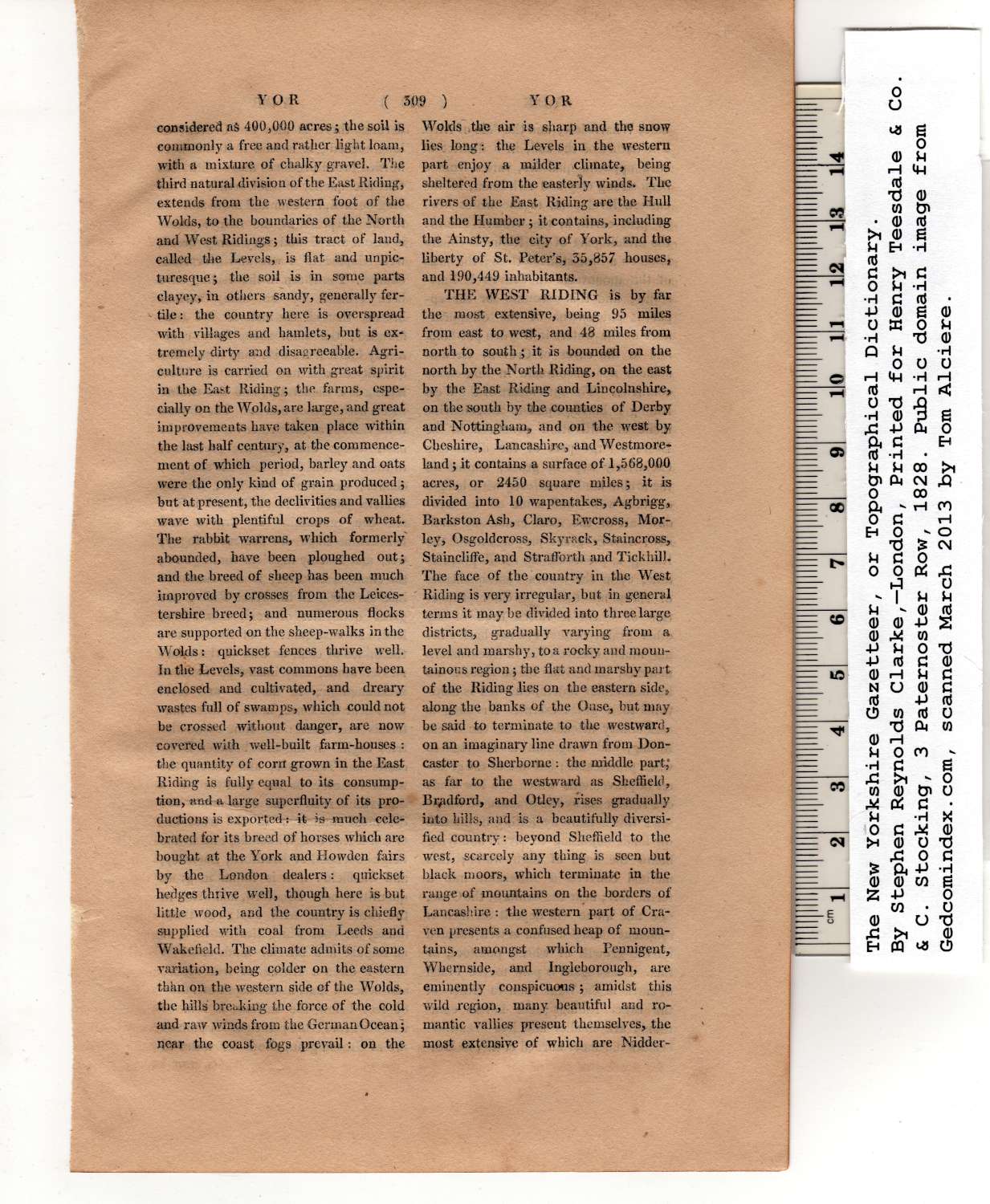|
considered as 400,000 acres; the soil is
commonly a free and rather light loam,
with a mixture of chalky gravel. The
third natural division of the East Riding,
extends from the western foot of the
Wolds, to the boundaries of the North
and West Ridings; this tract of land,
called the Levels, is flat and unpic-
turesque; the soil is in some parts
clayey, in others sandy, generally fer-
tile : the country here is overspread
with villages and hamlets, but is ex-
tremely dirty and disagreeable. Agri-
culture is carried on with great spirit
in the East Riding; the farms, espe-
cially on the Wolds, are large, and great
improvements have taken place within
the last half century, at the commence-
ment of which period, barley and oats
were the only kind of grain produced;
but at present, the declivities and vallies
wave with plentiful crops of wheat.
The rabbit wTarrens, which formerly'
abounded, have been ploughed out;
and the breed of sheep has been much
improved by crosses from the Leices-
tershire breed; and numerous flocks
are supported on the sheep-walks in the
Wolds: quickset fences thrive well.
In the Levels, vast commons have been
enclosed and cultivated, and dreary
wastes full of swamps, which could not
be crossed without danger, are now
covered with well-built farm-houses :
the quantity of corn grown in the East
Riding is fully equal to its consump-
tion, and a large superfluity of its pro-
ductions is exported r it is much cele-
brated for its breed of horses which are
bought at the York and Howden fairs
by the London dealers: quickset
hedges thrive well, though here is but
little wood, and the country is chiefly
supplied with coal from Leeds and
Wakefield. The climate admits of some
variation, being colder on the eastern
than on the western side of the Wolds,
the hills breaking the force of the cold
and raw winds from the German Ocean;
near the coast fogs prevail: on the |
Wolds the air is sharp and the snow
lies long: the Levels in the western
part enjoy a milder climate, being
sheltered from the easterly winds. The
rivers of the East Riding are the Hull
and the Humber; it contains, including
the Ainsty, the city of York, and the
liberty of St. Peter’s, 35,857 houses,
and 190,449 inhabitants.
THE WEST RIDING is by far
the most extensive, being 95 miles
from east to west, and 48 miles from
north to south; it is bounded on the
north by the North Riding, on the east
by the East Riding and Lincolnshire,
on the south by the counties of Derby
and Nottingham, and on the west by
Cheshire, Lancashire, and Westmore-
land ; it contains a surface of 1,568,000
acres, or 2450 square miles; it is
divided into 10 wapentakes, Agbrigg,
Barkston Ash, Claro, Ewcross, Mor-
ley, Osgoldcross, Skyrack, Staincross,
Staincliffe, and Strafforth and Tickhill.
The face of the country in the West
Riding is very irregular, but in general
terms it may be divided into three large
districts, gradually varying from a
level and marshy, to a rocky and moun-
tainous region; the flat and marshy part
of the Riding lies on the eastern side,
along the banks of the Ouse, but may
be said to terminate to the westward,
on an imaginary line drawn from Don-
caster to Sherborne : the middle part,4
as far to the westward as Sheffield,
Bradford, and Otley, rises gradually
into hills, and is a beautifully diversi-
fied country: beyond Sheffield to the
west, scarcely any thing is seen but
black moors, which terminate in the
range of mountains on the borders of
Lancashire : the western part of Cra-
ven presents a confused heap of moun-
tains, amongst which Pennigent,
Whernside, and Ingleborough, are
eminently conspicuous; amidst this
wild region, many beautiful and ro-
mantic vallies present themselves, the
most extensive of which are Nidder- |
